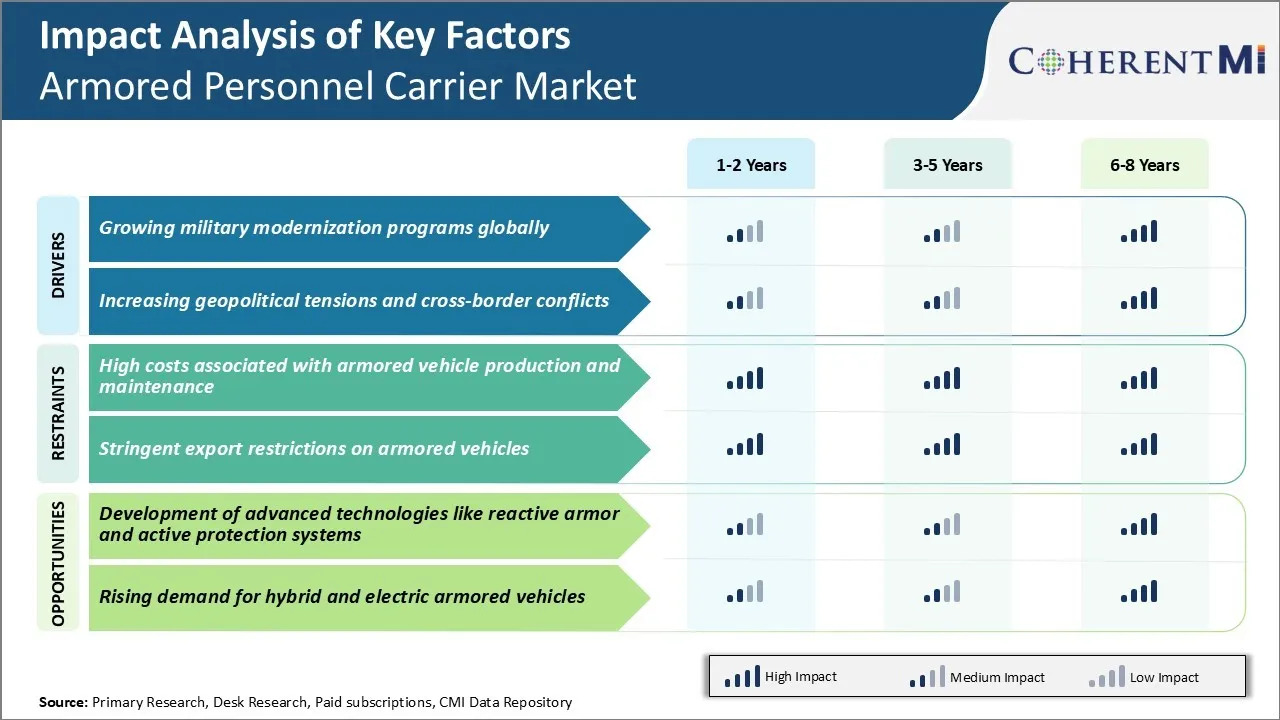Armored Personnel Carrier Market Trends
Market Driver - Growing Military Modernization Programs Globally
The demand for advanced armored vehicles has been steadily increasing all over the world as various countries are allocating higher defense budgets for military modernization activities. Several developing economies are also stepping up their defense spending to build stronger armed forces in view of their geo-political ambitions and strategic goals.
Countries like India, which have long standing border issues, are heavily investing in land warfare systems as a key element of their national defense strategy. Even the well-established military powers are constantly evaluating threats and upgrading their armored brigades with the latest protection, networking and precision strike technologies.
With availability of higher technological solutions, many security agencies are additionally procuring MRAPs and armored trucks for internal security duties and law enforcement roles that were not traditionally fulfilled by tracked APCs. Developing highly protected multi-role vehicles therefore remains an influencing factor for the worldwide armored vehicle business.
Market Driver - Increasing Geopolitical Tensions and Cross-Border Conflicts
The current global security environment is characterized by rising geopolitical tensions between major world powers and the threat of cross-border conflicts. This is generating strong momentum for the armored personnel carrier market. Some volatile situations around the globe are prompting defense planners to enhance mobility capabilities of armored personnel carrier that would be deployed in combat zones.
Geopolitical confrontations are also ongoing between Turkey and Kurdish separatists as well as Turkish vs Greek Cypriot administrations in the Middle East. In Europe, the ongoing tension between NATO and Russia owing to the latter's annexation of Crimea is a reminder of persisting risks. Even the African continent is no exception with violent separatist movements and civil wars ravaging nations like Libya, Democratic Republic of Congo, Central African Republic, Nigeria and South Sudan.
All such conflict hotspots signify a sustained requirement of well-protected, armored personnel carriers along with logistics and utility variants for various peacekeeping and territorial defense mandates. This demand shows no signs of abating unless the fundamental geopolitical issues triggering such disputes get resolved.

Market Challenge - High Costs Associated with Armored Vehicle Production and Maintenance
One of the major challenges faced in the armored personnel carrier market is the high costs associated with armored vehicle production and maintenance. Producing highly protective armored personnel carrier requires the use of thick steel plates and other ballistic materials that substantially increase raw material costs. Additionally, specialized manufacturing processes like welding of thick armor plates needs advanced machinery and skills, raising production costs.
Furthermore, the weight of the heavy armor also contributes to high fuel and maintenance costs over the operational life of these vehicles. With modern threats like IEDs and rocket propelled grenades widely available, providing maximum protection to troops inside the vehicle is critical.
However, the costs involved pose a constraint for military budgets of many nations. Cost control throughout the production process and reuse of existing vehicle frames can help reduce costs to some extent. But the inherently high cost of ballistic protection will remain a major challenge for armored personnel carrier market players.
Market Opportunity - Development of Advanced Technologies like Reactive Armor and Active Protection Systems
One of the key opportunities in the armored personnel carrier market is the development of advanced armor protection technologies like reactive armor and active protection systems. Reactive armor uses explosive reactive plates that detonate outwardly to destroy incoming threats like rocket propelled grenades before they hit the main armor. This provides additional standoff protection without significantly adding to the base armor thickness and weight.
Similarly, active protection systems use sensors to detect incoming threats and countermeasures like mini rockets to intercept them during flight. These technologies significantly boost survivability compared to conventional passive armor alone. Their adoption allows addressing modern threats with lighter and more affordable armored vehicles. Leading defense firms are extensively researching these solutions.
Successful development and demonstration at scale can open lucrative new revenue streams as military forces seek to upgrade their existing fleets. This presents a major opportunity in the armored personnel carrier market over the coming decade for players involved in cutting-edge armor technologies.